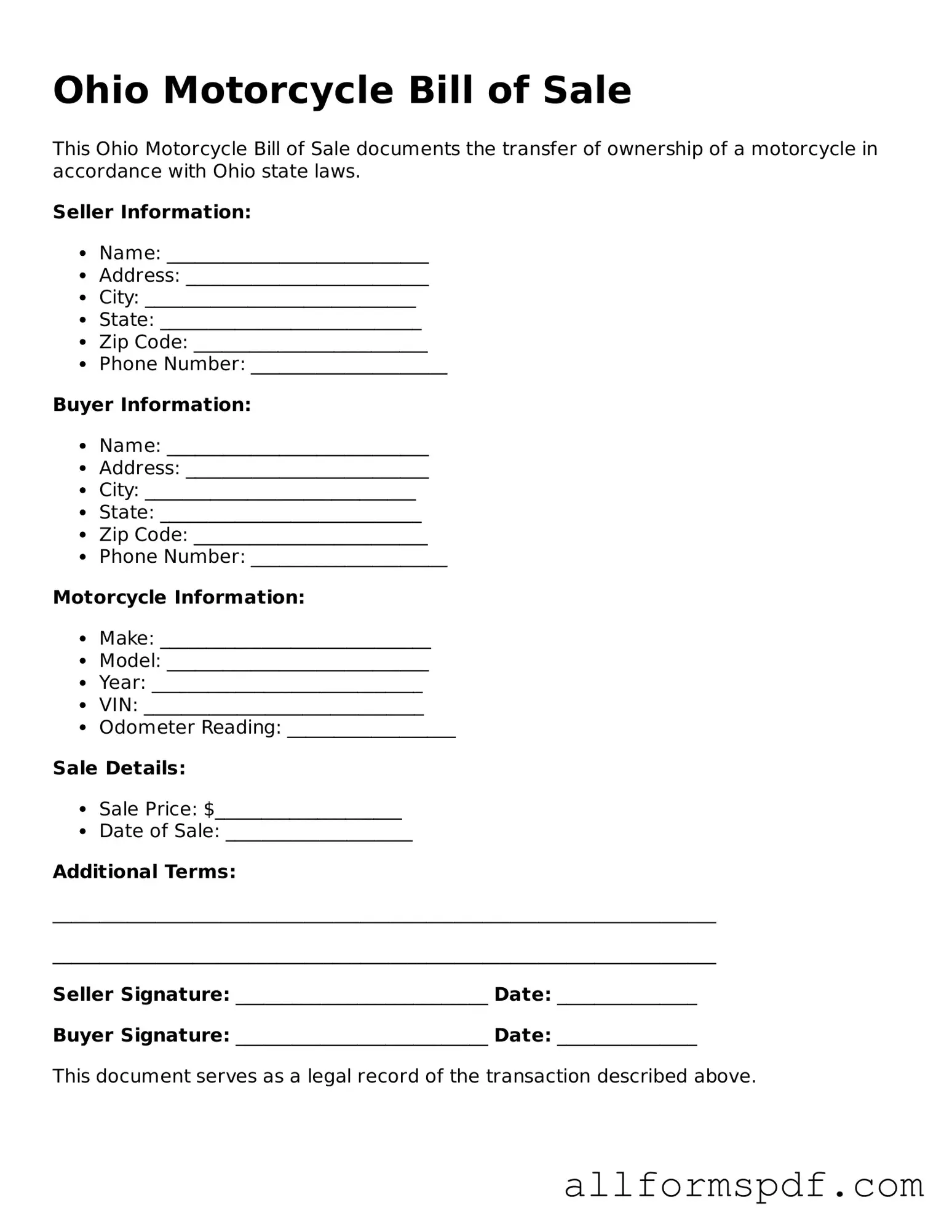Filling out the Ohio Motorcycle Bill of Sale form can seem straightforward, but many individuals make common mistakes that can lead to complications down the line. One prevalent error is failing to include the correct vehicle identification number (VIN). The VIN is a unique identifier for the motorcycle, and inaccuracies can create issues during registration or transfer of ownership.
Another frequent mistake is neglecting to provide the correct names and addresses of both the buyer and the seller. This information is crucial for establishing clear ownership and ensuring that all parties are properly identified. Omitting or misspelling names can lead to legal complications in the future.
People often forget to include the sale price of the motorcycle. This detail is not only important for record-keeping but also for tax purposes. Without a stated price, the transaction may raise questions from tax authorities or lead to disputes between the buyer and seller.
Additionally, some individuals fail to date the form. A date is essential as it indicates when the sale took place. Without this information, it can be challenging to determine the timeline of ownership and responsibilities associated with the motorcycle.
Many also overlook the need for signatures. Both the buyer and seller must sign the document to validate the transaction. A missing signature can render the bill of sale ineffective, complicating the transfer of ownership.
Inaccurate odometer readings are another common mistake. It’s important to provide the correct mileage at the time of sale. This information is vital for both parties, as it can affect the motorcycle's value and the buyer's future maintenance decisions.
Another issue arises when individuals do not make copies of the completed bill of sale. Keeping a copy is important for both the buyer and seller for future reference. Without a record, it may be difficult to prove ownership or the terms of the sale if any disputes arise.
Sometimes, people fail to check local laws regarding additional requirements for the bill of sale. While Ohio has specific guidelines, local jurisdictions may have their own regulations. Being unaware of these can lead to further complications during the registration process.
Some individuals also neglect to consider the condition of the motorcycle. A detailed description of the motorcycle’s condition should be included in the bill of sale. This protects both parties by providing a clear understanding of what is being sold and any potential issues that may arise.
Lastly, not reviewing the completed form before submission is a common oversight. Taking a moment to double-check all entries can help catch errors that could cause problems later. Thoroughness is key to ensuring a smooth transaction.
